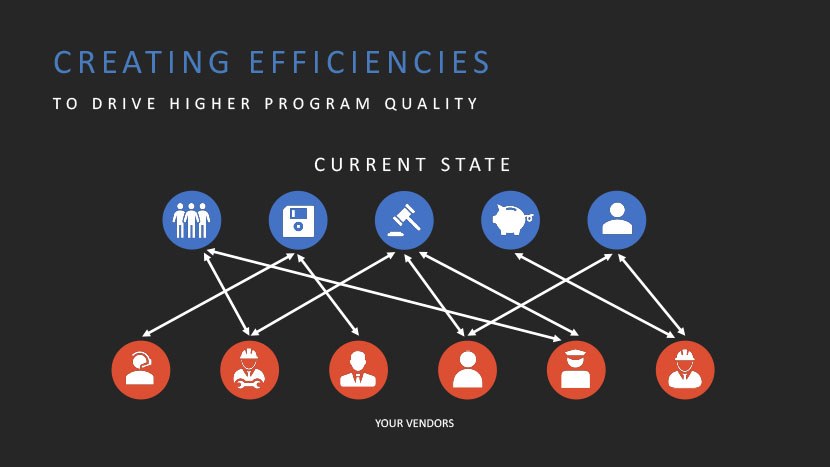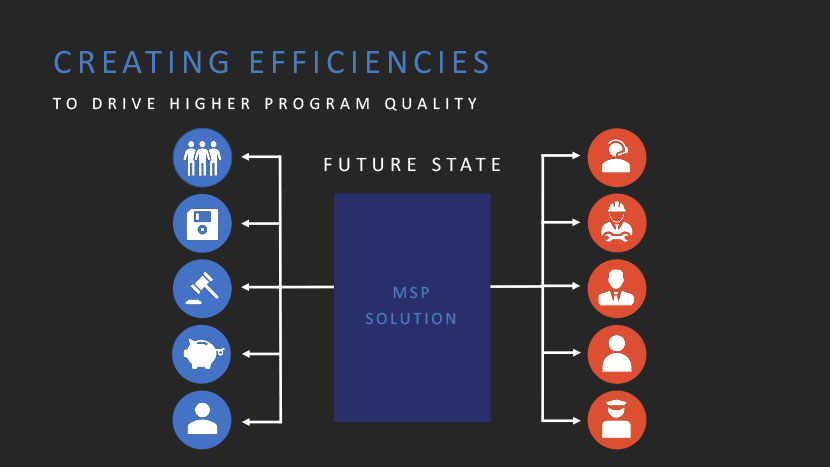Co-authored by Kelly Couto, Associate Vice President of Managed Services at Atrium, one of our trusted MSP partners.
Struggling with spiraling costs related to your contingent workforce program? Striving for greater regulatory compliance, competitive rates, and better insight across your business?
Experts from Atrium, a world-class talent solutions firm, and the VectorVMS vendor management team joined forces to share their contingent workforce management expertise in a webinar for organizations seeking solutions to these and other thorny—and expensive—problems.
Here are three key takeaways to help you understand the underlying causes of your challenges and effective solutions to better manage your contingent workforce.
Defining Your Current and Future State
You can’t fix what you can’t see.
Companies that lack efficient processes or technology to manage their contingent workforce program typically also lack accurate data and visibility into things like current spending rates, process and workflow, and workforce needs.
Inefficiencies in your contingent workforce program could be causing an adverse ripple effect on the rest of your organization’s workflow and overall business goals. The graphic below illustrates the current state of a company that doesn’t have a cohesive program.

Inadequate Processes and Technology for Managing Contingent Resources
Confusion across your organization may be due to
- Decreased efficiency through manual processes
- Higher risk due to non-formalized compliance process
- Spiraling costs without vendor optimization and rate rationalization
- No consolidated billing & invoicing (CIP)
- Lack of visibility into your program.
An inaccurate portrait of your current state leaves managers without data to make business decisions. As a result, the program suffers from a lack of solid benchmarks, inconsistent rates, invoicing errors, and other risks.
Also read: 6 Ways to Mitigate Risk in Your Contingent Workforce Program
So before you get started, set a foundation for increased visibility. Identify specific pain points within your program and processes to better understand where—and how—to make improvements.
Ultimately, the desired state looks like this:

Centralize and Simplify Contingent Resource Needs and Workflow
A managed service provider (MSP) coordinates departmental activities and creates consistency across rates, compliance, and process—reducing costs across the board by as much as 15%, increasing visibility, and lowering risk.
You’re probably thinking, how do I get there?
Successfully managing your contingent workforce program has three key components: people, process, and technology. By asking the right questions, your organization can thoroughly define its contingent labor program and develop an action plan for success.
Key 1: People
Who is involved in your current temporary resource process? Think senior sponsors and day-to-day implementers and administrators. These are the people who will influence—and drive—your optimized MSP program.
Who is in your contingent labor pool? Identify and organize them by market. This will help program stakeholders assess and analyze things like co-employment risk and hard and soft costs. And it will help determine which temporary resource populations are best suited for management through an MSP.
Key 2: Process
What does your existing program consist of? Who does what and when? Where are the inefficiencies, weaknesses, and gaps?
Organize current step-by-step processes and workflows, including temporary resource variances, by business unit or another meaningful breakdown.
With the process fully captured, your stakeholders can conduct working sessions to review and modify the workflows for greater efficiency and consistent compliance.
Key 3: Technology
What internal/external system(s) does your company currently use throughout the process of sourcing, matching, engaging, onboarding, and paying temporary resources?
Take into account tools like applicant tracking systems (ATS), vendor management systems (VMS), human resource information systems (HRIS), customer relationship management (CRM), accounting/finance, and contract systems.




